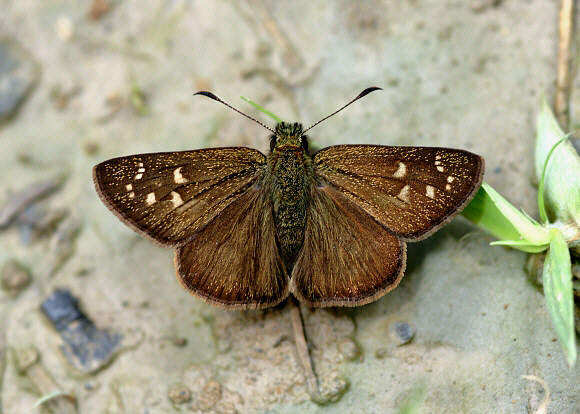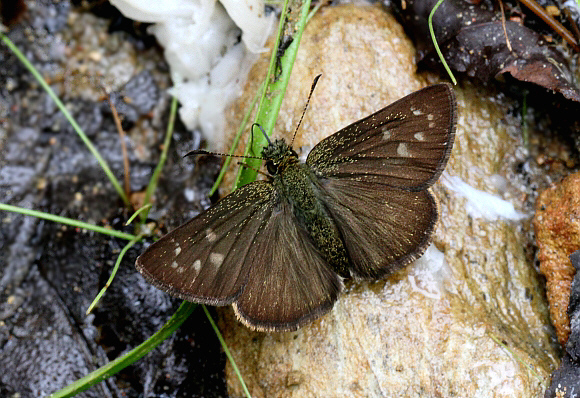
Introduction
The Chequered Skipper (aka Arctic Skipper) Carterocephalus palaemon is one of only a handful of species in the subfamily Heteropterinae which occur in the northern hemisphere. The remaining 140 species, including the 95 which make up the genus Dalla, are exclusively neotropical in distribution.
In most Dalla species, the upperside wings are dark brown, marked with yellow or whitish spots and patches on the forewings. There is usually a single large spot on the hindwings. The underside tends to be very similar in pattern, but with more subdued patterns and colors. However, there are some species including jelskyi and ramirezi in which the hindwings are marked with prominent white rays, and others such as cocha and dimidiatus in which the entire basal half of the underside hindwings is white or pale yellow. The most unusual species is sepia, which is brown with a pale median band on the underside hindwings, and has forewings in which the costa is strongly concave, and the apex is falcate.
Dalla plancus is distributed from Colombia to Bolivia.
Habitats
This species inhabits Andean cloudforests at elevations between about 1400-2000m.
Lifecycle
I have no data relating to the early stages of any Dalla species, but it is likely that the lifecycle bears similarities with Carterocephalus. If this is the case, the eggs are probably globular, pale in color, and laid singly on grass blades. The larvae are likely to be green, and marked along the back and sides with fine dark or pale lines. They almost certainly construct shelters made by rolling a grass blade into a tube, bound together with silk. The pupae are likely to be formed within a tent of leaves.
Adult behaviour
In flight, the butterflies can easily be mistaken for large flies – the flight is very rapid, zigzagging and buzzing about just above the surface of the ground.
Males often congregate with other Dalla species at roadside puddles, particularly near habitations. When feeding, the wings are usually held outspread or partly open, but when settled on hot paths the butterflies close their wings as a means of regulating their body temperatures.

